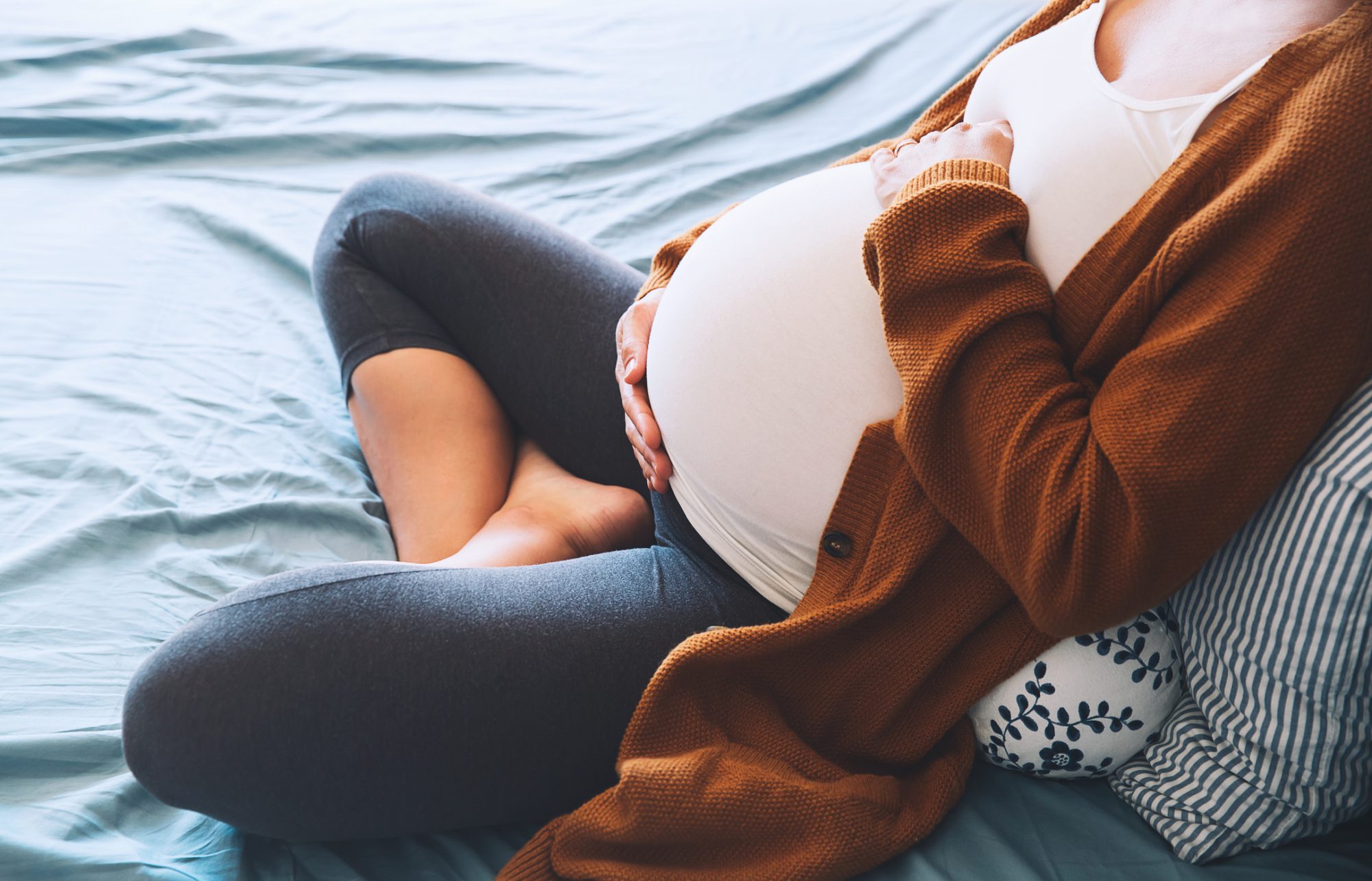Perhaps you're a first-time parent-to-be, bursting with excitement (and maybe morning sickness). Or maybe your little one isn't little anymore and you start to plan your next bundle of joy. After 20 years as a chiropractor caring for pregnant people, I have centered my passion on educating and empowering them to have their best pregnancy. It's important to savor, not suffer through, this journey.

I'd like to introduce you to the most common conditions that affect people earlier in pregnancy than they may expect—particularly in subsequent pregnancies.
Low Back Pain
Take 20 pounds of weight, strap it to your body, carry it around 24/7—it's plain to see why your lower back starts to ache. And once Linda Low Back Pain (medically called lumbago) is in town, there's a good chance her "ride or die," Sally Sciatica, (medically called lumbar radiculitis) is lurking nearby. But more on her in a second.
As the baby grows, your center of gravity shifts forward. This places more strain on your lower back and often results in pressure and compression in these muscles, leading to pain. Lower back pain can come and go, be sharp or dull, or so severe you cannot walk. Sudden, extreme onset of musculoskeletal lower back pain can indicate a herniated disc or spondylolisthesis.
Major muscles of the lower back are the quadratus lumborum and the paraspinals. Underneath the lumbar areas are the sacrum and the ilium (pelvis). Where the sacrum and the ilium meet is called the sacroiliac joint. In that same area are the piriformis, the glutes, and the IT band.
Herniated discs are common during pregnancy because of the ligamentous changes. A typical presentation for someone with a fresh disc herniation is lower back pain that shoots down the back of the leg, past the knee, accompanied by pain when coughing, sneezing, or laughing. That shooting pain is called sciatica; it's the result of that movement rattling the outside "Saran Wrap" layer of your spinal cord, which is full of pain fibers.
The pain eventually goes away in your back and leaves you with a toothache-lingering-type pain down your leg.
What does the low back pain feel like?
Linda Low Back Pain ranges from tightness in your lower back to feeling like your back may break.
What makes it worse?
Wearing crappy shoes and holding other babies or a big bag on your hip are bad for lower back pain.
What can make it go away?
For low back pain, try stretching before getting out of bed, wearing supportive shoes, and massaging the lower back.
Sciatica
Sally Sciatica likes to enlist the same muscles as Linda as accomplices to wreak even more havoc on your lower back. And sadly, if you thought Linda was bad, Sally Sciatica can drop you to the ground. She starts out being a pain in your butt but then can affect your leg with searing, hot pain. Luckily, she's typically caused by something more temporary than a herniated disc, but that does not diminish the impact on your life.
What does sciatica pain feel like?
Sciatica feels like a hot, searing pain down your leg.
What makes it worse?
With sciatica, sitting for too long and having a curve in your lower back are the main culprits.
What can make it go away?
For sciatica, try a tennis ball to your butt in circular motions, stretching, and icing where it hurts.
Pubic Pain
If you are having vaginal or pelvic pressure, a cramping sensation, or pain early in your pregnancy, it is most likely your uterus expanding. Once Linda or Sally set up camp, they leave the door wide open for Peggy Pubis, especially if it is your second or subsequent pregnancy.
Pubic pain can range from annoying pressure to feeling as though a horse kicked you in the crotch. It's usually accompanied by pain in your lower back, pelvis, and inside your thighs, similar to when you have your period. It can even cause clicking sounds!
Peggy loves the nightlife, typically raising hell from the moment you lay down. She'll have you turning over in bed from burning in your hips.
In the last trimester, a lightning-like pain can be caused by the pressure of your baby moving into the birth canal. While this means you're getting closer to meeting your baby, the lightning can last for weeks before you actually go into labor.
Why does pubic pain happen?
During pregnancy, that gap between either side of your pelvic bones nearly doubles in width. The pubic symphysis is one of the areas the relaxin hormone settles, which causes the pelvis and the pelvic ring to become incredibly hyper-mobile. This is a good thing: the baby will need that extra wiggle room to pass through. But Peggy—known medically as symphysis pubis dysfunction (SPD)—has never been one to leave things alone.
Symphysis pubis dysfunction, a condition caused by excessive movement of the pubic symphysis, is extremely painful and may be associated with the misalignment of your pelvis. They call it "lightning crotch" because that is exactly what it feels like. The major cause of this dysfunction is the failure of the pelvic floor, which is why this is typically experienced toward the end of pregnancy.
Your pelvic floor is like a trampoline that holds up your pelvic parts. It's made up of ligaments that stretch and deform, but do not snap back as muscles do. When you have your first child, that "trampoline" is tight. By the end of the pregnancy, it starts to stretch out. Post-pregnancy, that "trampoline" slowly begins to return to its previous shape, but never quite regains its pre-pregnancy elasticity and strength. So, with a second pregnancy, it dips a little lower, and Peggy rears her ugly head.
What does the pain feel like?
Pressure or stabbing in your groin.
What makes it worse?
Squatting, picking up your other child, getting into a big SUV.
What can make it go away?
Gentle trigger point work, ice to your nether regions for five minutes, sleeping with a pillow between your legs, pregnancy belt.
What You Don't Expect When You're Expecting by Dr. Brandie Nemchenko. Copyright 2021 by Dr. Brandie Nemchenko. Reproduced with permission of Dr. Brandie Nemchenko.





